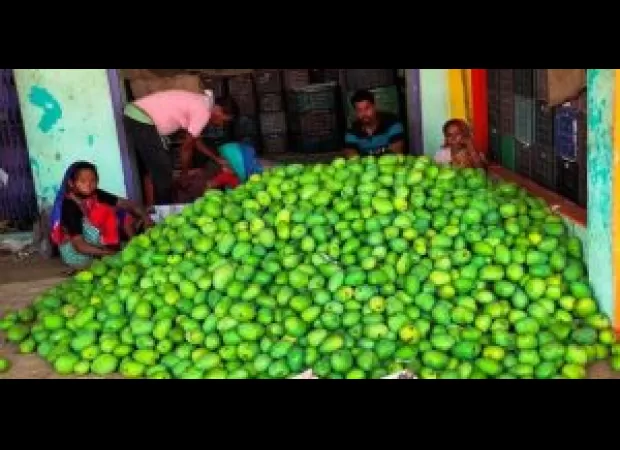Despite the season, mango farmers are making money.
Despite a long heatwave, Odisha's mango farmers are expecting higher earnings due to lower fruit yield. Some farmers in top mango-producing areas have noted low moisture levels due to limited rainfall.

This year, the mango farmers of Odisha are facing a challenging situation. Despite the prolonged heatwave in the state, they are expecting to earn more from the lower fruit harvest. However, farmers in the major mango-producing districts like Gajapati, Rayagada, Dhenkanal and Puri are facing difficulties due to the lack of moisture caused by sparse rainfall. This has led to a decrease in production and a rise in prices in local markets. According to weather experts, this year's summer has been the harshest in the last two decades, with a total of 27 heatwave days and temperatures exceeding 40 degrees Celsius in more than 15 districts. These extreme weather conditions have resulted in frequent felling of mangoes from the trees, affecting their size, weight, and quality.
Krushna Mohapatra, a 58-year-old mango farmer, owns a 60-acre orchard in Kashipur block of Rayagada district. He has witnessed a significant decrease in production this year compared to the previous one, with a decrease of less than 50%. His orchard grows various varieties of mangoes such as Langda, Daseri, Amrapalli, Sundari and Akhurasa. However, the Amrapali variety stands out among them, as it is barely available this year due to a lack of flowering in the trees. Krushna explains that last year, there was an abundant harvest of Amrapali in his farm, and the supply to the market continued until June-end. However, this year, due to its scarcity, Amrapali mangoes are being sold to traders at four times the normal price. Similarly, the Daseri variety is also being sold at a higher price of Rs 40, compared to Rs 30 last year. Krushna predicts a harvest of only 500 baskets this year, compared to the usual 2,000 baskets, which will result in higher prices and profits for farmers.
Despite being the eighth-largest producer of mangoes in India, with an annual production of 847.81 tonnes, Odisha has also been affected by the inadequate precipitation this year. According to an expert, the size and quantity of the fruit have been impacted, with the weight of Langda and Amrapali mangoes decreasing from 300 gm to 150 gm. Unlike other fruits, mangoes do not require a high volume of water or fertilizer supply, making it a low-risk and high-return option for farmers. Ajit Sahu, a farmer from Mohana block in Gajapati district, shares how he has been able to sell Langda mangoes at a profit of Rs 15 per kilo this year, compared to Rs 30 last year. He also mentions that last year, nine mangoes of the Langda variety made up a kilo, but this year, even 12 mangoes struggle to reach a kilo. As a result, farmers have had to increase the price by Rs 10 per kilo to make a profit. The current prices of Langda and Amrapali are Rs 60 and Rs 80 per kg, respectively, compared to Rs 45 and Rs 90 in the same period last year.
However, Assistant Director of Horticulture at Ekamra Kanan, Chittaranjan Sahoo, believes that regular plowing of fields and ensuring adequate moisture are crucial for growing good quality mangoes. He explains that if a tree fails to bear fruits during peak harvest season, it is an indication that it did not receive enough nourishment in the form of good soil and water. While harsh weather conditions can affect the growth of mangoes, it is also essential for farmers to create a favorable micro-climate for the trees to ensure sustainable growth.
1 Views






